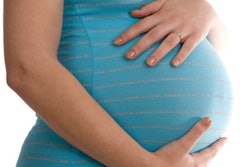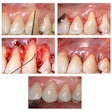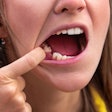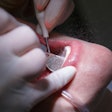
Pregnant women are believed to face an increased risk of gingival bleeding and tooth decay. But when during pregnancy do these changes occur, and could differences in oral health status, behavior, or attitude be responsible?
Two poster studies presented at the International Association for Dental Research (IADR) annual meeting examined some of these issues.
Marika Hasunen, a doctoral student at the Institute of Dentistry at the University of Turku in Finland, investigated oral health differences between women at the end of the first trimester of pregnancy and nonpregnant women. Meanwhile, in a separate presentation, researchers from the University of Hong Kong led by May Chun Mei Wong, PhD, a professor of dental public health, studied the self-reported oral health problems experienced by women in early to midpregnancy.
“Gingival inflammation and tooth decay are common in pregnant women already during the first trimester.”
Results of the studies suggest that oral health problems are common among pregnant women, and the researchers propose that various factors, including the regularity of dental care, could play a role.
"Gingival inflammation and tooth decay are common in pregnant women already during the first trimester," the Finnish researchers concluded. "This may be partly explained by increased frequency of nausea during the early pregnancy."
Changes seen early
Periodontal disease and dental caries are the most common oral health diseases that combine biofilm formation with systemic factors, while pregnant women are at increased risk of gingival bleeding and tooth decay, the University of Turku researchers noted in their poster. They sought to examine whether oral health status and health behavior differ between pregnant and nonpregnant women.
They recruited 29 pregnant women at the end of the first trimester and 24 nonpregnant women from the same municipal healthcare center. All study participants were healthy Caucasian women between the ages of 24 and 36. The researchers collected data on dental checkup history and oral hygiene habits and measured stimulated salivary flow rate.
They found that the pregnant women had significantly more caries lesions, significantly higher bleeding on probing scores, and significantly higher visible plaque scores than the nonpregnant women, and they were significantly less likely to clean their interdental area daily.
| Oral health of nonpregnant vs. pregnant women | |||||
| Nonpregnant women | 1st-trimester pregnant women | ||||
| No. of caries lesions | 2.2 | 2.3 | |||
| Bleeding on probing percentage | 7.1% | 24.4% | |||
| Visible plaque percentage | 10.6% | 24.7% | |||
However, the researchers reported no significant differences between the groups in the regularity of dental checkups, time since the last dental exam, brushing habits, salivary flow rate, number of initial caries lesions, intact and decayed-missing-filled teeth, decayed-missing-filled surfaces, and dental fillings.
Oral health problems are common
Meanwhile, in a second presentation on the topic at IADR 2017, researchers from the University of Hong Kong studied oral health factors in 589 women enrolled in a clinical trial on oral health promotion. The women were a mean of 14 weeks pregnant, with a range of 10 to 22 weeks.
At baseline, the study participants were asked about the oral health problems they experienced during pregnancy, their knowledge of the causes and prevention of dental caries and periodontal disease (score from 0 to 12), and their attitude about the importance of oral health and dental health beliefs (score from 0 to 8). They also completed a questionnaire on oral hygiene practices, dental attendance patterns, and socioeconomic background.
Toothbrushing at least twice a day was reported by 84.2% of participants, with almost two-thirds using additional oral hygiene aids and 46.9% receiving regular dental care. More than 450 (76.9%) of the women reported having oral health problems. The following problems were most frequently mentioned:
- Bleeding gums (37.3%)
- Bad breath (35.3%)
- Sensitivity to hot and cold (30.1%)
The researchers gave each of the women scores for their oral health knowledge and attitude based on their survey responses. The results indicated that experiencing oral health problems is common during early to midpregnancy. However, those who had regular dental visits (p < 0.001) and those who had more a positive attitude score (p = 0.043) were significantly less likely to experience oral health problems.



















